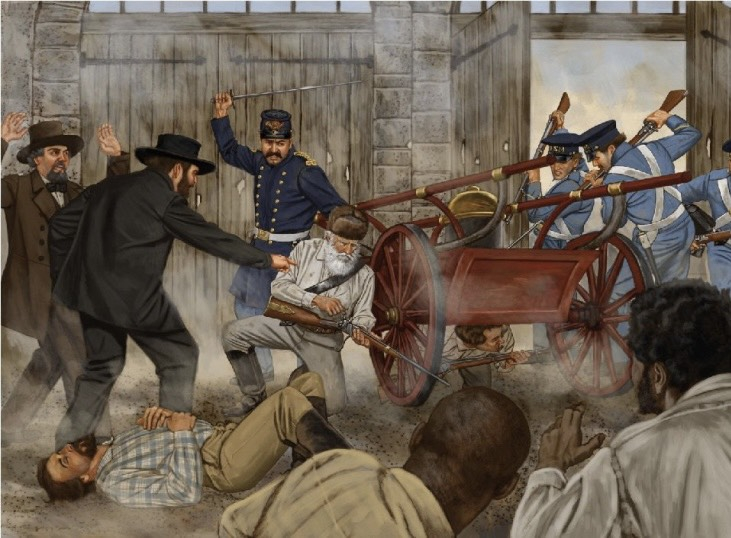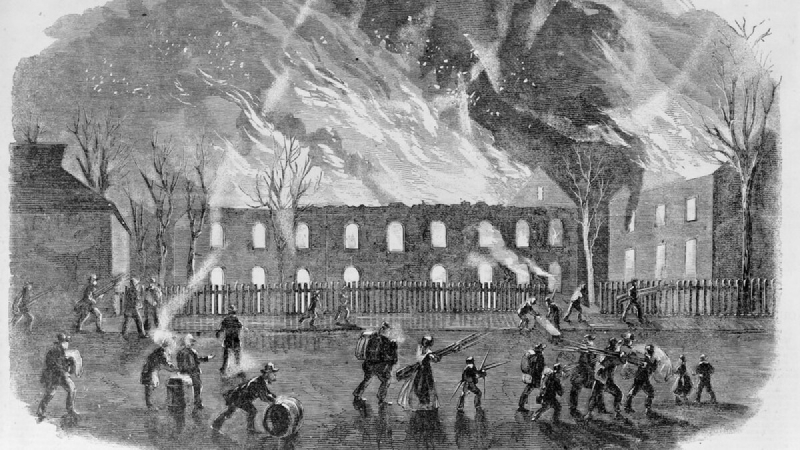The day after Virginia seceded from the Union, Federal soldiers burnt the armory and arsenal at Harpers Ferry
On April 17, 1861, Virginia decided to leave the Union, and Harpers Ferry's famed armory was immediately a target. Henry A. Wise, a former governor of Virginia who executed John Brown for committing similar crimes against the arsenal, devised a plan to take over the priceless armory. Wise wanted to assemble militia to seize the arsenal before the Federal government organized enough forces to hold it because he knew that no arms supplier south of the Mason-Dixon Line could match the quantity or quality of Harpers Ferry's production. Lieutenant Roger Jones, a Federal commander stationed in Harpers Ferry, sent a worried message to Washington warning that the armory was in danger and that thousands of troops would be needed to defend it as Virginia militia bands started to assemble less than four miles away. Jones intervened on his own when it became apparent that Washington was ignoring his request.
In the main armory building, nearly 15,000 muskets and combustibles were destroyed by fire on April 18 at 10 p.m. Jones and his troops then fled across the Potomac Bridge. However, his efforts were largely in futile because the arsenal suffered very minor damage. The remaining parts of the armory were transported south to Richmond and Fayetteville, North Carolina, with more than 4,000 rifles still in operable shape and a large amount of machinery that could be salvaged.












